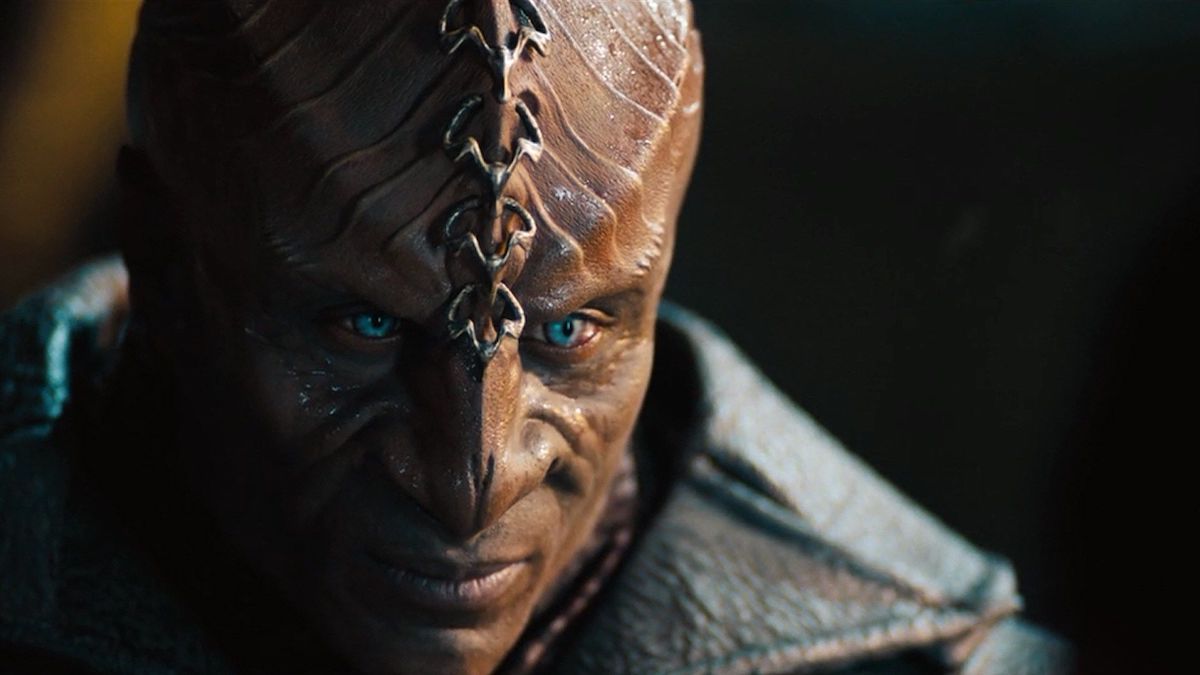How did zebras get their stripes? No one knows, except maybe zoologists. But in Star Trek: Discovery, we’ll find out why the Klingons got their forehead ridges, and they actually serve an important biological purpose.
Image: CBS
During a panel at the Star Trek Las Vegas convention (as shared by Trek Movie), Discovery creature designers Neville Page and Glenn Hetrick chatted about the show’s version of Klingons, which look remarkably different from earlier versions. Mainly, they’re bald. According to Page, there are two reasons for this: It was a mandate from original showrunner Bryan Fuller, and because they heighten Klingons’ senses. Wait, hold on a second.
That’s right, Discovery is introducing a genetic reason for the ridges. Traditionally, they have been viewed as part of each Klingon House’s lineage, showing other Klingons what families each person belongs to. While that’s still true, Page adds that the ridges have extra-sensory receptors, running from the top of their heads to their backs. This is because Klingons are “apex predators”, so this is something that helped them get to the top of the food chain. Actor Mary Chieffo, who plays L’Rell, clarified a bit:
Obviously the hair was the biggest thing people noticed, or the lack thereof. And I will attest to the fact there is a reason my ridge goes back the way it does. There are sensors and pheromones…There is a whole reasoning behind it that is adhering to what has always been true in Klingon canon…So I deeply believe we are in line with what has come before but is also adding a new kind of nuance.
On the surface, this actually seems like an OK idea. We haven’t really gotten a reason for the forehead ridges (although we do know makeup artist Michael Westmore based them on dinosaur bones) so it doesn’t change or destroy anything we already understand about the show. The bald thing is new, though. It could result in some interesting storylines, especially between the Klingons and Starfleet. Plus, I’ll take any excuse to make Klingons even more badarse than they already are.
However, it does raise a lot of questions. These Klingons are bald to better access their senses, so is their hair loss genetic or do they shave? Why would some Klingons evolve to have hair and others wouldn’t, and would that affect their abilities? Also, what about the Klingon Augment Virus? Did losing their ridges mean those Klingons lost their extra-sensory abilities, and when they got their ridges back, did they return? And is that virus the reason that they have hair AND ridges later on?
Most importantly: Why would anyone pierce their forehead ridges if they contain extra-sensory receptors? That just sounds counter-productive, and really painful.

Ouch, dude. Image: Bad Robot Productions
Star Trek: Discovery has had some issues during its production, to say the least, but it’s clear the team isn’t screwing around in regards to Klingons. They’re having the actors speak Klingon with subtitles, working with a dialogue coach and translator to make sure it looks and sounds accurate. And the costumes, props and creature makeup look interesting… even if some of it doesn’t match what we’ve seen from Klingons in the past. However, Page said that’s entirely on purpose.
“The Empire is very big. They don’t all grow up on Qo’noS. They don’t all live on the same planets and certainly those different planets would have different environments. So how would the cultures have evolved differently?” Page said. “We tried to come up with cultural axioms for each house so each looks different and they bear a cultural patina like our cultures do here on Earth.”
Star Trek: Discovery debuts September 24, with extra ridges.
